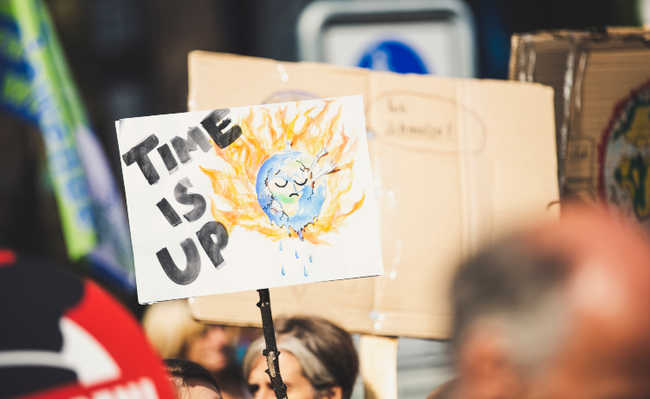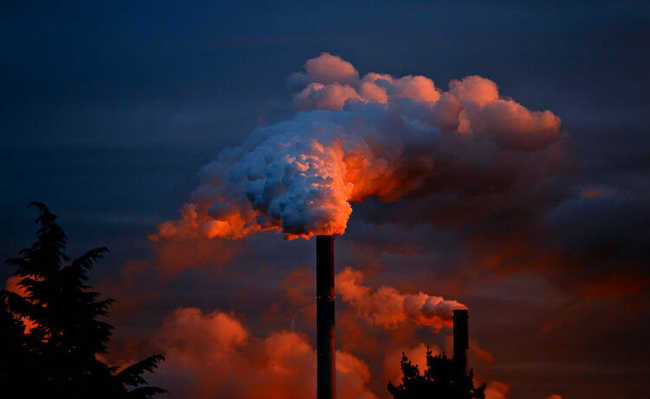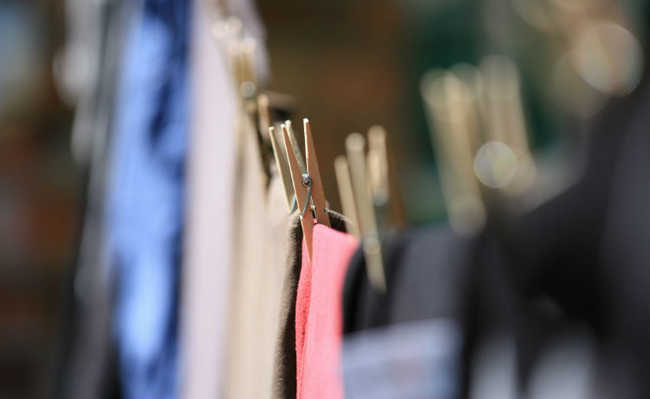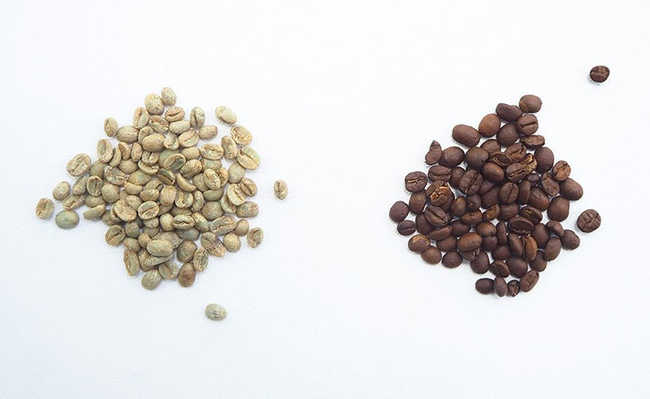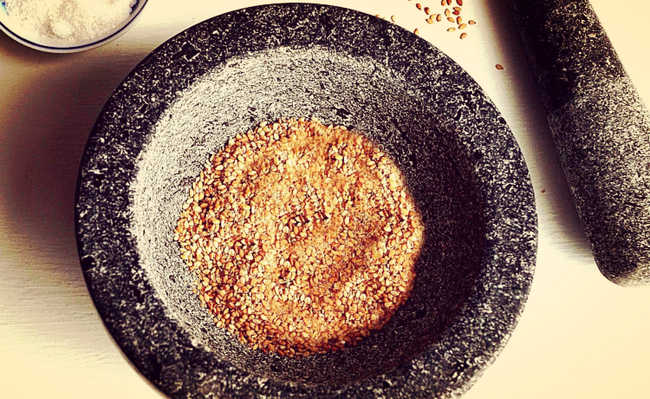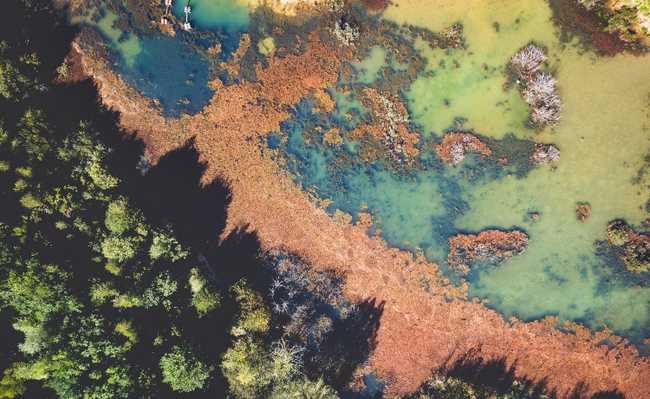How to treat rainwater?
Check out the step-by-step instructions on how to filter rainwater and how to capture and store it before that

Daniel Ghio's Unsplash image
How to treat rainwater? There are those who believe that it is not possible to treat rainwater for their own consumption. But it is not only possible, it can be a sustainable attitude.
Check out the step by step how to treat rainwater. However, before treating rainwater, remember that you need to know how to store it in the best way possible. The sheet in the image above is not the best place for this!
How to treat rainwater
Even in metropolitan regions, where the concentration of pollutants in the air is usually higher, rainwater, if well filtered and treated, can become potable and suitable for consumption. According to Pedro Caetano Sanches Mancuso, professor at the Department of Environmental Health at the Faculty of Public Health at the University of São Paulo (USP), "the purification process can be carried out at home. The cleaner the capture, the better. , the water can be placed in conventional kitchen filters, where the candle, if well maintained, removes particles. After this process, the ideal is for the water to be boiled for at least five minutes to eliminate the bacteria. for consumption”.
The World Health Organization (WHO) estimates that 110 liters a day per person is enough to meet all needs, including hydration.
But before filtering rainwater, see in the topics below how to capture and store it before and after the treatment.
To treat rainwater, use a candle filter. Enter the desired amount of water and wait for the filter to do its job. Then remove the water from the filter and boil it in a pan for at least five minutes. Normally, after this process, the water will be ready for consumption, but if you feel more safe using chlorine, you can add 16 drops of odorless chlorine for every 20 liters of water. Chlorine is very effective in eliminating pathogenic microorganisms and has saved humanity from infectious diseases for many years. However, its long-term use is also associated with the development of some types of cancer.
How to capture rainwater that will be filtered
The best way to store rainwater is using a cistern. And the faster the water is used, the better.
But beware: avoid consuming rainwater before filtering it, as in its original state it is not drinkable, due to the presence of contaminating substances in the atmosphere. These toxic substances are mainly present in urban centers and industrial cities. Learn more about the subject in the article: "Is rainwater drinkable?".
When burning fuels, carcinogenic gases such as benzene and other pollutants are released. But even in cities far from urban centers and industrial cities, the air can also be contaminated.
That's because pollutants can travel long distances. In addition, rainwater formed in the field may have excess calcium and potassium. The clouds on the coast have a lot of sodium. These substances can cause hypertension and heart problems, among others. In other words, untreated rainwater is not recommended for consumption. Even rainwater stored in cisterns is not drinkable, it needs to be treated first.
To store rainwater, use cisterns suitable for this. Check out types of cisterns in the article: "Types of cisterns: models from cement to plastic". And to find out how to acquire quality cisterns, check out the article: "Buying cisterns: models for capturing rainwater".
When purchasing cisterns, in addition to buying a suitable place to store rainwater, you can also use them for reuse water from the washing machine, air conditioning, swimming pool, shower, among others. But be aware: unlike rainwater, reuse water cannot be treated for consumption and this water must be stored in a separate cistern. Understand these types of water better in the article "Water for reuse and use of rainwater: what are the differences?".
When storing rainwater for treatment and subsequent consumption, it is necessary to discard the first wave of water in order to eliminate the highest possible concentration of pollutants that accumulate mainly in the gutters.
For good rainwater storage, it is necessary to use a filter in the cistern, preventing the appearance of disease vectors mosquitoes - in most cisterns the filters are already attached. However, storing water is no joke, discipline is required. The gutters must be cleaned periodically to prevent contamination by feces from rats or dead animals, among other precautions. To learn about the precautions and advantages of rainwater storage in more detail, take a look at the article: "Rainwater harvesting: know the advantages and necessary precautions for using a cistern".
How to save rainwater that has become potable
Care must also be taken to store rainwater that has become potable after filtration. The best way is to use clean glass containers (preferably sterilized with hot water) specifically designed for this purpose. But you can also use stainless steel.
The water that will be stored must be boiled to eliminate any bacteria and larvae. To increase the effectiveness of protection against living organisms, you can add 16 drops of odorless chlorine to every 20 liters of water.
Seal the bottle and keep it out of direct sunlight. If you didn't find any glass or stainless steel bottles and chose plastic to store the water, keep the gallon away from gasoline, kerosene and pesticides, as evaporation can permeate the plastic.
Why not store drinking water in a PET bottle
One of the main problems in reusing these bottles is bacterial contamination. That's because PET bottles are a humid, closed environment with great contact with the mouth and hands, a perfect place for bacteria to breed. A study of 75 water samples from bottles that elementary school students had used for months without ever washing them, found that about two-thirds of the samples had bacterial levels above recommended standards. The amount of fecal coliforms (bacteria from mammalian feces) was identified above the recommended limit in ten of the 75 samples studied. The unwashed bottles act as a perfect breeding ground for bacteria, says Cathy Ryan, one of the people responsible for the study.
In addition, it is no use washing the PET bottle, as there are plastic contaminants that are not eliminated, such as bisphenols. To learn more about them, take a look at the article: "Know the types of bisphenol and their risks". To understand in more detail the dangers of reusing a PET bottle, take a look at the article: "Discover the dangers of reusing your small bottle of water."





